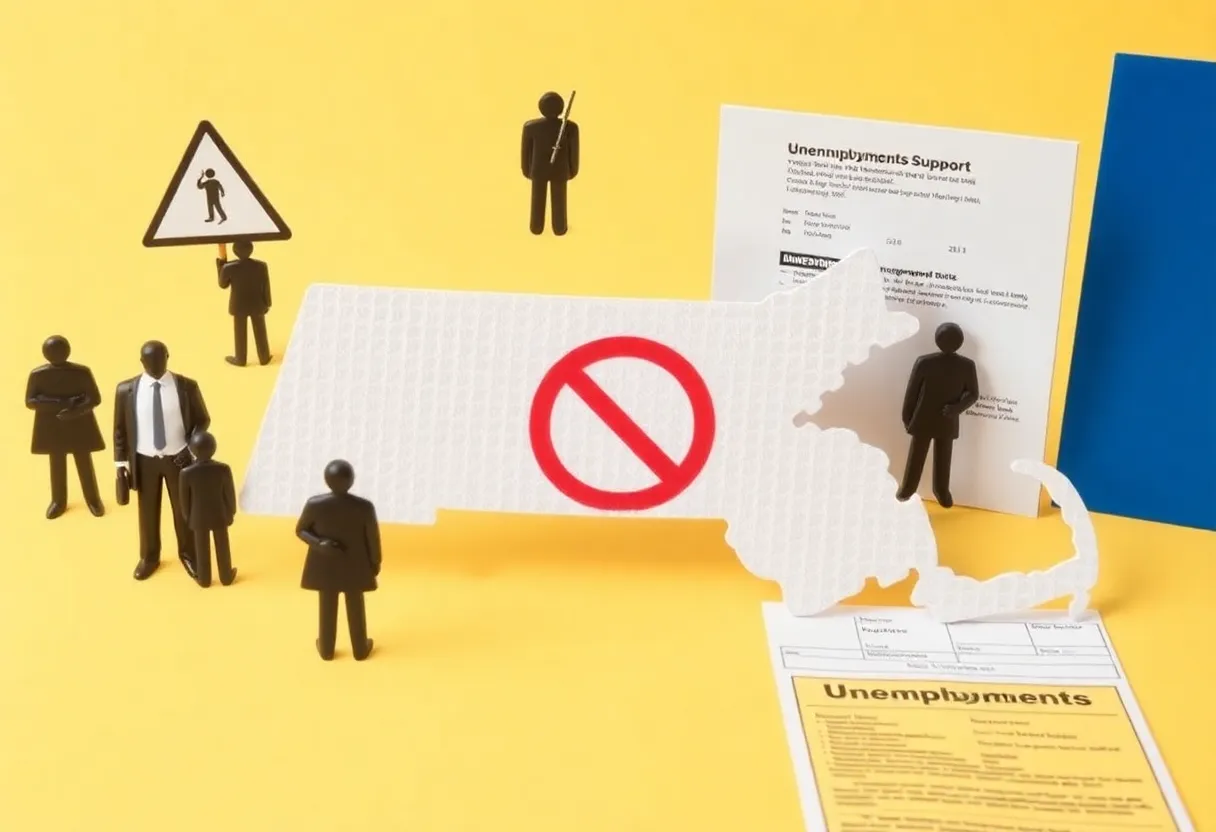News Summary
Massachusetts has extended its unemployment benefits from 26 to 30 weeks amid a slight decrease in initial unemployment claims. As of the week ending May 17, claims fell to 7,396, reflecting ongoing economic concerns. The change is activated when the unemployment rate exceeds 5.1% in metropolitan areas, with Springfield qualifying at 5.2%. While this extension supports jobless individuals, worries about the sustainability of the unemployment insurance trust fund persist, especially given significant job losses in the private sector. Stakeholders highlight the need for reforms to improve the job market and economic competitiveness.
Springfield, Massachusetts — The state of Massachusetts has expanded its unemployment benefits to a maximum of 30 weeks as initial unemployment claims show a slight decrease amid ongoing concerns about the job market. This new development comes as unemployment claims in the state fell to 7,396 during the week ending May 17, down from 7,596 the week before, as reported by the U.S. Department of Labor.
Nationally, unemployment claims also saw a decline, with numbers dropping to 227,000, a reduction of 2,000 from the previous week’s figures. In this context, North Dakota experienced the largest percentage increase in weekly claims, rising by 31.8%, while the Virgin Islands saw the most significant percentage decrease at 33.3%.
Details of the Extended Benefits
Individuals filing new unemployment claims in Massachusetts will now be able to receive benefits for up to 30 weeks, an increase from the prior limit of 26 weeks. This extension is activated when the unemployment rate in any of the state’s seven metropolitan statistical areas exceeds a 5.1% threshold based on an average over the prior 12 months. The Springfield area has reported an unemployment rate of 5.2%, thus qualifying for this benefit extension.
The change in the duration of unemployment benefits is mandated by a law passed in 2003 and comes after Massachusetts had maintained a 26-week benefit period since July 2023 due to lower unemployment levels across all metro areas. As of March, the statewide unadjusted unemployment rate stood at 5%, which is notably higher than the national rate of 4.2%. Furthermore, the state’s adjusted unemployment rate was reported at 4.4%, marking the highest level since October 2021.
Concerns Over Unemployment Fund Solvency
While these changes provide essential support for jobless individuals, they have sparked concerns about the sustainability of the state’s unemployment insurance trust fund. Projections indicate that the fund may be insolvent by 2028 due to the nearly $5 billion businesses are currently repaying from federal aid packages. The Massachusetts Fiscal Alliance reported significant job losses in the private sector, estimating almost 25,000 positions lost in the past year, while government jobs have markedly increased.
Data from the state revealed a decrease of 12,100 private sector jobs between March 2024 and March 2025. This shifting landscape has led business advocacy groups, such as the National Federation of Independent Business (NFIB), to voice concerns about the financial burden the unemployment system places on employers. High costs and broad eligibility requirements are exacerbating difficulties for businesses in the state.
Labor Participation and Future Trends
Despite the challenges, Massachusetts maintains a labor participation rate of nearly 67% as of March, surpassing the national average by 4.1 percentage points. As discussions about the future of the unemployment insurance system continue, stakeholders are emphasizing the need for systemic reforms to lessen the burden on employers and boost the state’s economic competitiveness.
Given the extended unemployment benefits statewide, stakeholders are closely monitoring the implications for both the job market and the overall economy. The divergence between the rising unemployment claims and the state’s efforts to provide extended support reflects the complex dynamics currently at play in Massachusetts as it navigates this critical economic period.
Deeper Dive: News & Info About This Topic
- CBS News: Massachusetts Unemployment Benefits Extended
- Boston.com: Elevated Jobless Rate Triggers Extensions
- Western Mass News: Lawmakers Address Delayed Unemployment Claims
- WWLP: Unemployment Recipients Eligible for 30 Weeks of Benefits
- Boston Globe: Massachusetts Unemployment Benefits Update
- Wikipedia: Unemployment
- Google Search: Unemployment Benefits Massachusetts
- Google Scholar: Unemployment Insurance
- Encyclopedia Britannica: Unemployment
- Google News: Massachusetts Unemployment

Author: STAFF HERE BOSTON WRITER
The BOSTON STAFF WRITER represents the experienced team at HEREBoston.com, your go-to source for actionable local news and information in Boston, Suffolk County, and beyond. Specializing in "news you can use," we cover essential topics like product reviews for personal and business needs, local business directories, politics, real estate trends, neighborhood insights, and state news affecting the area—with deep expertise drawn from years of dedicated reporting and strong community input, including local press releases and business updates. We deliver top reporting on high-value events such as Boston Marathon, Head of the Charles Regatta, and Boston Harborfest. Our coverage extends to key organizations like the Greater Boston Chamber of Commerce and Associated Industries of Massachusetts, plus leading businesses in finance, biotech, and insurance that power the local economy such as Fidelity Investments, Biogen, and Liberty Mutual Insurance. As part of the broader HERE network, we provide comprehensive, credible insights into Massachusetts's dynamic landscape.





